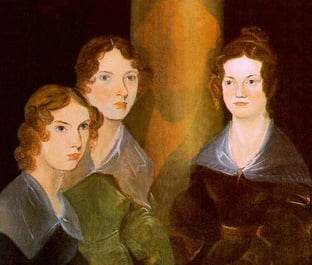1. Jane Eyre
This timeless novel written by Charlotte Brontë, one of the acclaimed Brontë Sisters, whose catalogue of works can be found in The Brontë Sisters by Walter E. Smith, is a Gothic Romance from the Victorian Era. Jane’s story begins in an abusive home, continues in a school for orphans, and comes to fruition in a gothic and gloomy mansion. Despite the dark, sinister and mysterious surroundings, the strength and goodness of Jane prevails.
2. Wuthering Heights
Emily Brontë, literal and literary sister to Charlotte, wrote another of the era’s best novels. Like Jane Eyre, the events of Wuthering Heights are dark and mysterious and expose some of the worst aspects of human nature.
3. Strange Case of Dr. Jekyll and Mr. Hyde
Strange Case of Dr. Jekyll and Mr. Hyde (1886) is a novella by Robert Louis Stevenson. It’s often referred to as just Jekyll and Hyde. And, the expression, “Jekyll and Hyde” has infiltrated culture to a point that most everyone understands its meaning, with or without having read the story. The novella itself is an essential piece of Victorian literature, shedding light on themes of good vs. evil as well as personal and societal concerns of the time.
4. Middlemarch
Mary Ann Evans wrote this highly acclaimed novel under the penname George Eliot to ensure that it would be taken seriously. That alone provides a powerful commentary on the Victorian age. The novel itself is complex and provides no neatly packaged happily-ever-after. Rather, compromise and sacrifice are the order of the day. To learn more about the author herself and how she came to delve so deeply into the nature of her characters, read George Eliot: The Emergent Self by Ruby V. Redinger.
5. Bleak House
 Charles Dickens was a prolific writer of Victorian novels. In Bleak House he turns a satiric eye on the British judicial system and choreographs a large cast of characters in plots and subplots to accomplish his end.
Charles Dickens was a prolific writer of Victorian novels. In Bleak House he turns a satiric eye on the British judicial system and choreographs a large cast of characters in plots and subplots to accomplish his end.
6. Great Expectations
Another Charles Dickens classic follows the story of Philip Pirrip, Pip, from his humble beginnings and mysterious graveyard encounter to his social and romantic ambitions. He is fueled and funded by a secret benefactor. Mysteries abound in this novel as do lessons on love and humility.
7. Vanity Fair: A Novel Without a Hero
William Makepeace Thackeray tells the story of two woman of opposite character and social standing. Through many plot twists and turns, the women arrive in a comfortable, even happy place in society, but as the title hints at, their decisions and actions are not always admirable.8. Tess of the D’urbervilles
A major theme in Thomas Hardy’s novel is fatalism. We follow the story of Tess, a young girl who is sent away to improve her family’s situation but is instead raped and ruined by her employer. She gives birth to “Sorrow” and sorrow indeed stays with her. Despite finding love and moments of happiness, she is unable, through the course of the novel, to change her destiny.
9. North and South
 This novel by Elizabeth Gaskell juxtaposes the rural south of England with the industrial north during the Industrial Revolution. Our heroine, Margaret, is concerned with social justice for the working class and is conflicted when she becomes enamored with an industrialist whom she feels treats his workers unfairly. The characters are complex and dynamic, and often selfless in their behavior toward one another. See Victorian Lady Novelists: George Eliot, Mrs. Gaskell, The Brontë Sisters by Morris Longstreth Parrish for an extensive bibliography of Gaskell’s works.
This novel by Elizabeth Gaskell juxtaposes the rural south of England with the industrial north during the Industrial Revolution. Our heroine, Margaret, is concerned with social justice for the working class and is conflicted when she becomes enamored with an industrialist whom she feels treats his workers unfairly. The characters are complex and dynamic, and often selfless in their behavior toward one another. See Victorian Lady Novelists: George Eliot, Mrs. Gaskell, The Brontë Sisters by Morris Longstreth Parrish for an extensive bibliography of Gaskell’s works.
10. Heart of Darkness
This Joseph Conrad novella makes up for in gravity what it lacks in volume. In roughly 100 pages, the author makes striking comparisons between savage and so-called civilized societies. The narration takes place on a boat in the Thames. The action of the story takes place in Africa. The distinction as to which is the heart of darkness becomes unclear as issues of racism and imperialism surface.
Often, one reads in an attempt to remain relevant. Ironically, exploring the universal themes in Victorian novels may be the best way to accomplish this end. Be sure your bookshelf provides you with opportunities to return to these classics. They are sure to engage your intellect and your imagination as they have done for generations of readers.










